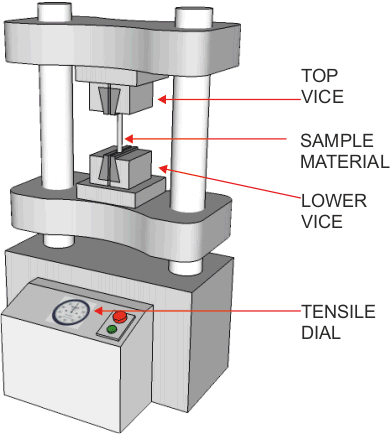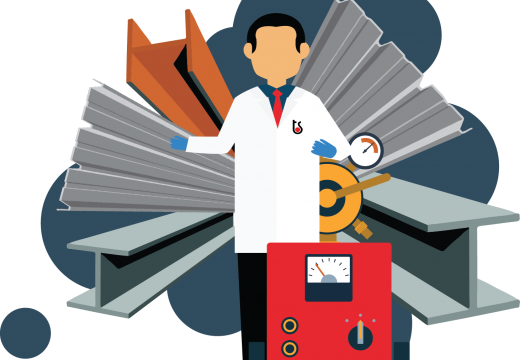Mastering Evaluation: Your Materials Test Lab Authority
Wiki Article
From Principle to Fact: The Importance of Materials Testing in Item Advancement
Materials testing is the systematic exam and examination of the properties and behavior of numerous materials used in item development. By subjecting materials to strenuous screening, item developers can take full advantage of product high quality, integrity, and ultimately, customer satisfaction. This short article explores the relevance of products testing in product growth and highlights its relevance in turning cutting-edge ideas into tangible, successful products.Specifying Material Demands

To specify product requirements accurately, extensive research and analysis are needed. The product advancement team need to consider elements such as mechanical properties, chemical compatibility, sturdiness, and cost-effectiveness. They must also think about any regulatory or security requirements that the product needs to fulfill.
Among the essential objectives in specifying product needs is to determine products that can hold up against the anticipated tensions and strains the product will experience throughout its lifecycle. This consists of taking into consideration variables such as temperature level changes, exposure to dampness or chemicals, and mechanical pressures. By choosing materials that can stand up to these problems, the item's performance and longevity can be maximized.
Moreover, specifying material requirements additionally entails taking into consideration the responsive and aesthetic qualities of the materials. The visual allure, structure, and feel of the product play a considerable role in its bankability and individual experience.
Carrying Out Strength and Longevity Evaluating
To make sure the dependability and long life of an item, conducting strength and longevity screening is important in the item advancement process. This kind of screening allows manufacturers to recognize how an item will certainly perform under numerous problems and stress degrees, assisting them make notified decisions regarding design alterations and product selections.Strength testing involves subjecting a product to controlled pressures to determine its ability to hold up against tons and stress. This can be done through tests such as stress, compression, bending, and torsion examinations. By gauging the product's action to these pressures, engineers can analyze its structural stability and recognize any weaknesses or possible failing points.

Evaluating Chemical Structure and Compatibility
Chemical composition and compatibility assessment is a vital action in the item advancement process as it enables manufacturers to examine the suitability of materials for their designated applications. Understanding the chemical make-up of a product is necessary to make certain that it meets the needed requirements for efficiency, performance, and safety.During the assessment procedure, suppliers analyze the chemical structure of products to establish their residential properties, such as resistance, toughness, and longevity to deterioration. This details aids in picking one of the most appropriate materials for specific applications, as different materials may have varying chemical compositions that influence their performance.
Compatibility assessment is dig this equally crucial, as it makes sure that the materials utilized in a product work with each various other and with any kind of other materials they might come into call with. Conflict can bring about chain reactions, deterioration, or perhaps failing of the item.
To examine chemical compatibility, manufacturers perform examinations to examine and simulate real-world conditions exactly how different materials connect. These tests might consist of direct exposure to various temperatures, stress, and chemicals. The outcomes of these tests assist manufacturers determine any type of potential problems and make notified decisions about product option and design modifications.
Assessing Security and Efficiency Requirements
Suppliers must thoroughly assess safety and efficiency requirements to guarantee the quality and reliability of their products. Efficiency standards, on the other hand, focus on evaluating the item's capacity to meet certain performance criteria and specifications. By analyzing safety and security and performance standards, suppliers can recognize any type of potential concerns or imperfections in their products and take the necessary actions to resolve them.
Taking Full Advantage Of Product Top Quality and Integrity
By making certain the comprehensive evaluation of security and performance requirements, producers can successfully maximize the top quality and integrity of their products. Optimizing item quality and reliability is important for companies to maintain and obtain an affordable side customer satisfaction - materials test lab. To attain this, manufacturers must employ strenuous testing techniques throughout the product growth processOne essential aspect of making the most of product top quality and dependability is conducting thorough products screening. This entails reviewing the buildings and attributes of the materials used in the production of the item. By testing the products for elements such as strength, resistance, and toughness to ecological conditions, suppliers can recognize possible weaknesses and make required enhancements to improve the overall high quality and reliability of the item.
In addition, makers should likewise take into consideration making use of sophisticated screening strategies, such as non-destructive testing (NDT) NDT permits the analysis of an item's stability without causing damages, ensuring that the high quality and reliability of the item are not endangered during the testing process.
In addition, manufacturers need to continuously keep an eye on and examine the efficiency of their products in real-world conditions. This can be done through field screening and gathering feedback from customers. By gathering and examining data on product performance, producers can determine locations for enhancement check my site and make necessary discover this info here adjustments to improve the high quality and dependability of their products.
Final Thought
To conclude, materials screening plays an essential role in product development by making sure that the products utilized satisfy the needed demands for stamina, longevity, chemical make-up, compatibility, efficiency, and safety standards. By performing comprehensive testing, manufacturers can maximize the high quality and reliability of their items - materials test lab. It is important to focus on materials examining throughout the advancement process to make certain the successful awareness of ideas right into concrete productsProducts screening is the organized assessment and assessment of the residential or commercial properties and actions of different materials made use of in item advancement. By subjecting products to extensive screening, item programmers can optimize product high quality, dependability, and eventually, customer contentment.One of the essential purposes in defining material requirements is to recognize materials that can stand up to the anticipated anxieties and strains the item will experience during its lifecycle. By accumulating and evaluating information on item efficiency, makers can identify areas for renovation and make necessary changes to improve the high quality and integrity of their products.
In conclusion, products testing plays an essential function in item development by guaranteeing that the products made use of satisfy the needed needs for strength, sturdiness, chemical make-up, performance, compatibility, and security criteria.
Report this wiki page